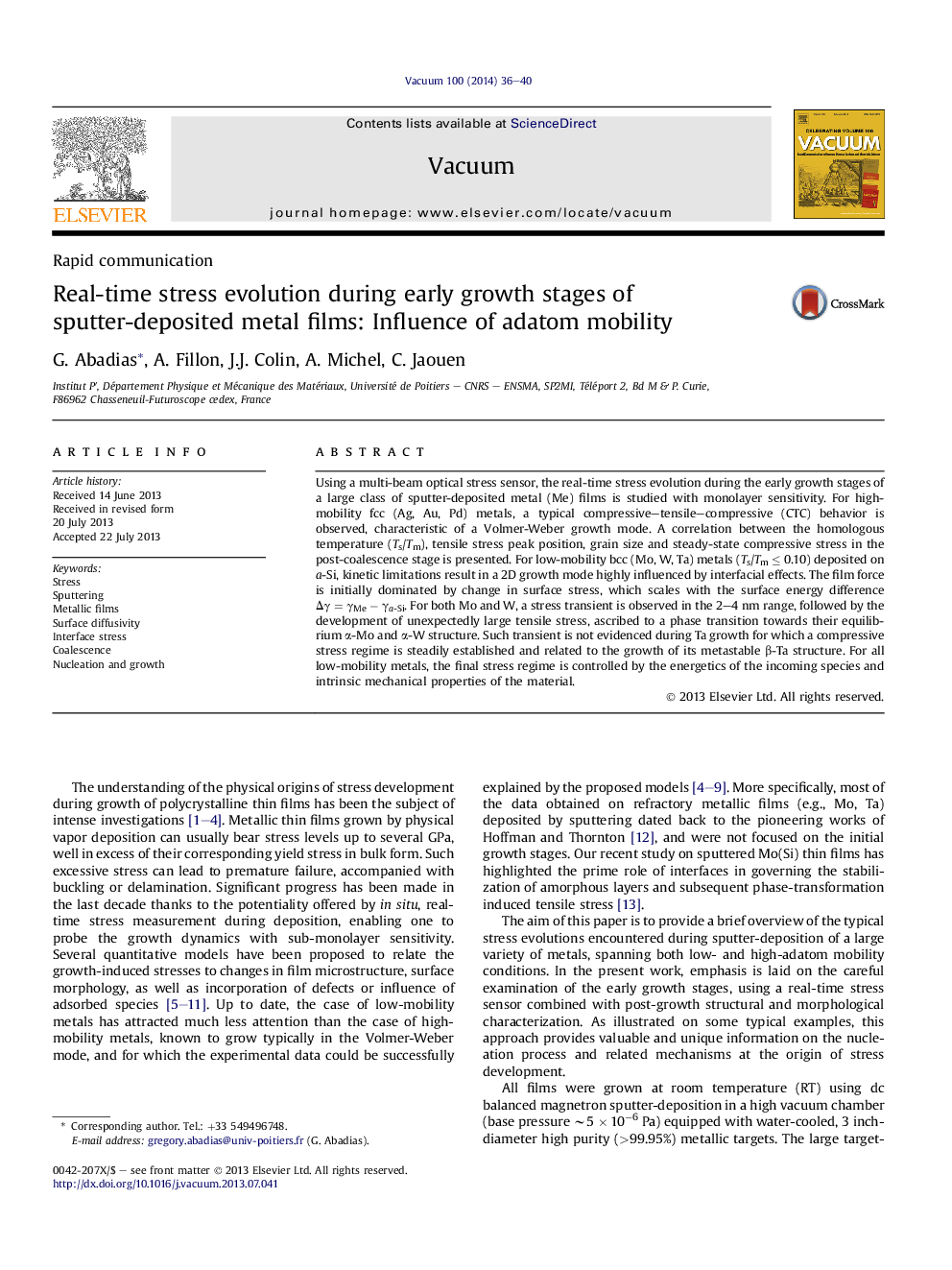| Article ID | Journal | Published Year | Pages | File Type |
|---|---|---|---|---|
| 1688412 | Vacuum | 2014 | 5 Pages |
Using a multi-beam optical stress sensor, the real-time stress evolution during the early growth stages of a large class of sputter-deposited metal (Me) films is studied with monolayer sensitivity. For high-mobility fcc (Ag, Au, Pd) metals, a typical compressive–tensile–compressive (CTC) behavior is observed, characteristic of a Volmer-Weber growth mode. A correlation between the homologous temperature (Ts/Tm), tensile stress peak position, grain size and steady-state compressive stress in the post-coalescence stage is presented. For low-mobility bcc (Mo, W, Ta) metals (Ts/Tm ≤ 0.10) deposited on a-Si, kinetic limitations result in a 2D growth mode highly influenced by interfacial effects. The film force is initially dominated by change in surface stress, which scales with the surface energy difference Δγ = γMe − γa-Si. For both Mo and W, a stress transient is observed in the 2–4 nm range, followed by the development of unexpectedly large tensile stress, ascribed to a phase transition towards their equilibrium α-Mo and α-W structure. Such transient is not evidenced during Ta growth for which a compressive stress regime is steadily established and related to the growth of its metastable β-Ta structure. For all low-mobility metals, the final stress regime is controlled by the energetics of the incoming species and intrinsic mechanical properties of the material.
